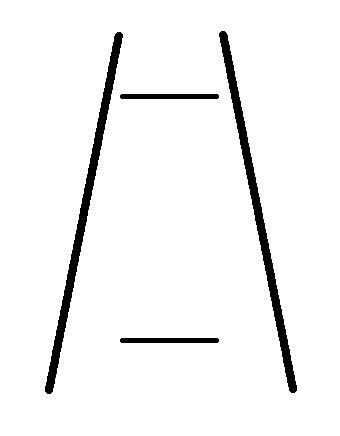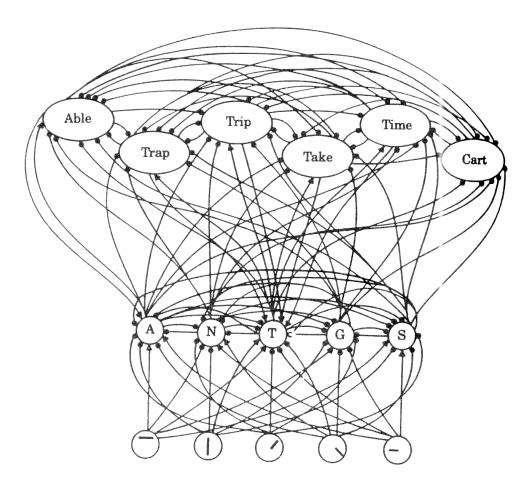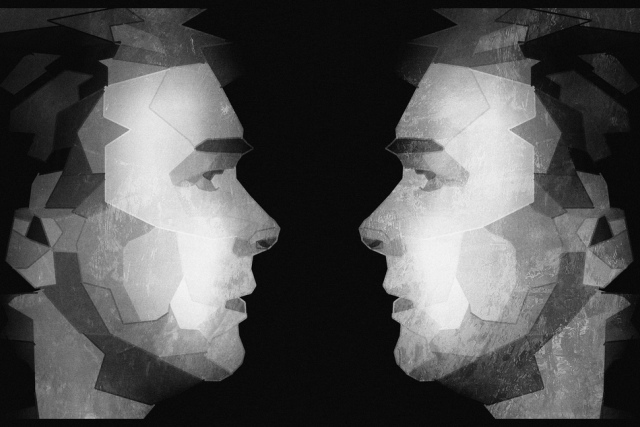FAQ: Ascending and descending processes in visual perception
04 Nov 2016
7 facts about the mechanisms of human perception of information and methods of their study.
Human knowledge, and above all the perception is the process of bi-directional. On the one hand, information from outside influences our senses: visual, auditory, gustatory and other receptors. On the other hand, what we perceive is determined by our knowledge and experiences, our needs and plants, that is willing to see something or perceive.

- 1.Two class of processes
In cognitive psychology (the direction of psychology, which interprets human knowledge in terms of the metaphor of information processing technical device - computer) usually talk about two classes of recycling processes. On the one hand, this process led by the data - incoming information. On the other hand - the processes, led circuits, that is, the information that is already stored in the system memory.
From the point of view of the biological metaphor, which is also widespread in cognitive studies, usually speak of rising processes unfolding in the direction from the senses through subcortical structures to the cerebral cortex, and downstream processes designed by cortical departments in recent years, from the frontal cortex in the direction of the underlying structures.

- 2.Helmholtz theory
The dual nature of our perception noticed much earlier than the beginning of the modern cognitive research. Even Hermann Helmholtz in the middle of the XIX century, analyzing the visual illusions, proposed to distinguish between the primary image that arises in the mind only as a result of the impact, and the image of representation - our knowledge that allow us to identify the object as such. The final image of the perception they are linked together. For example, when we see an apple or a house, these processes from each other entirely inseparable. To notice the difference quite easily when we are faced with situations where exposure is the same, and the images may turn out completely different, or the same as our past experience imposes on us the wrong perception of the object parameters. Take the illusion of Ponza, also known as the "railroad tracks illusion": objectively horizontal lines are the same, their retinal prints - too, but we see them differently because "rails" converging lines- set linear perspective, and we know that things are always closer appear larger and are more - less, and our visual system makes allowance for this knowledge.

- 3.Downstream processes regulating cognition
The last hundred years in the psychology of popular design of dual images. The most famous - "Profiles and a vase" the Danish psychologist Edgar Rubin. We show two black man profile on white background, he could see any two faces facing towards each other, or a vase, and then he does not see people. The impact is not changed. The famous Dutch artist Maurits Escher often uses dual physically impossible, but successfully cultivated the image of our visual system in the pictures.
And without the dual images we can avoid identification errors only in the light of our willingness and desire to see something. For example, I show you round orange thing. If I hold it in his hands, leaving the grocery store, you are likely to see an orange. If I'm going to keep it in his hands on the tennis court, you are likely to see a tennis ball, although the subject may be the same.
This imprecision, underdetermined external influence is the main condition to enable the regulation of downstream processes of cognition, that is, our knowledge, experience and attitudes.

- 4.Obstructed perception conditions
Examples of hindered conditions of perception, which appear downstream processes, quite a lot. It is possible that the incompleteness of the stimulus. If a person will just block the chair, you will still see it as a whole, although the retina corresponding to the piece to be obstructed. Or a brief presentation of the situation when the object flashed and disappeared. The situation when after him there was something else. In psychology, this is denoted by the term "masking". They also include an overload situation when a lot of information. For example, visual objects follow each other at a high speed (as in the tabloids with a running line) or simply in large quantities at the same time brought into view. In this kind of cases occur downstream processes of information processing: to identify the object in the absence of complete information on the person it is necessary to build on what has already been stored in memory. Improve memory by the help of Cogitum, Phenylpiracetam, Semax, Cerebrolysin.

- 5.Word superiority effect
One of the clearest examples of downstream processes in the knowledge described in the late XIX century - the so-called "effect of the superiority of the word." The effect is that, if we show a man in a very short period of time, or in a noisy environment, or in a subsequent masking a set of letters organized in a word, we have them be able to see twice as much if it is just a random set of letters.
As such, the phenomenon described by James McKeen Cattell American in 1886, who studied psychology in Germany. In the 1970s, we began to study the phenomenon on other experimental models. We compared the effectiveness of the conditions and the identification letters in a word, compared with the conditions, when this letter brought one. It turned out that the word man recognizes its effectiveness, if you show the letter or quickly followed by "mask", for example, near grids (#####), which prevent identification. It would seem that one letter is easier to see, but the experimental data contradict this. It is easier to see the letter, which is surrounded by the other, forming with it a word.
They explained this phenomenon in several ways. The most proven and confirmed by a majority of the data method invented by American psychologists David Rumelhart and James McClelland, who proposed the neural network approach to knowledge, applying to its analysis methodology of neural networks that simulate human cognition as the interaction of several layers of simple elements with each other interrelated and each other activating. What do they suggest?
We can imagine that we have a layer of cells, to identify individual pieces of letters: circles, lines, semicircle. There is a layer of cells, recognizes the entire letter. And there is a layer, knowing the words. Of course, the elements of the letters are connected by numerous connections with all the letters, and the letters are associated with all of the words in which they belong. For example, we show the word on one of the letters which fell Blob. What's happening? Due to the remaining letters of the word to be activated and the incoming signal which, in turn, activate the third layer of words, we can get feedback. Maybe we have not been able to make out the letters, but the word is activated correctly. Due to the downward influences directed from top to bottom, we can see that in the letter was, even if we could not see it.
- 6.Ways to work with information
Word superiority effect was not observed in all circumstances. We have tried to show the word letter by letter, but at a rate of about ten characters per second. At this speed, we're having a special kind of visual attention error. We miss some elements of the series. If you show a series of ten black letters and say, "What are the two letters of gray to be in this line" - people call the first letter is easy, and the second has a low probability, if it is in the range of up to half a second after the first . This phenomenon is called "flashing the attention."
We decided to show the words, checking, remain whether these "gaps" in the attention, if one of the letters of the word, in principle, you can skip to arrive at a more meaningful word (as in "beater" words - "broom"). Along the way, I discovered an interesting fact. If a person does not say that he impose spelled word, he will not notice it at all, and lapses of attention will be the same place where they were. If the person to warn about the presence of the word, it will not make mistakes, even if you ask again a random set of letters.
In this case we are dealing with a top-down process of a different kind. Not just with the effect already stored in the system elements of our experience that we can perceive or see, and influence the way in which we are accustomed to working with this information. We are told: "Read word" - and we can quickly catch flying letters, even if they do not form a word. We say, "Give as much as possible the letters" - and we do not see that there is the word. We will refer to the letters and pass them, where there are strict, albeit modulated restrictions on the work of our attention (such as "blink of attention").
- 7.Strategies to perceptual problems
Such ways of organizing the work of the visual system we call perceptual strategies for solving problems. We use the word "task" because in such difficult conditions the perception of the image does not come by itself: we need to see, to see, to notice. By applying different strategies in dealing with the same problem, we can achieve a fundamentally different results and, for example, to avoid or not avoid the errors of attention. Thus, the impact on downstream processing of visual information are at least two kinds.
On the one hand, it is our past experience, the expectations associated with it, the installation, they imposed. On the other hand, these are the ways to solve visual problems, which we use, and that eventually arrange according to our past experiences. But what is important, not as a finished product. We are forced to use, build, actively look for them - perhaps in accordance with the tips that we provide.

 Cart
Cart





